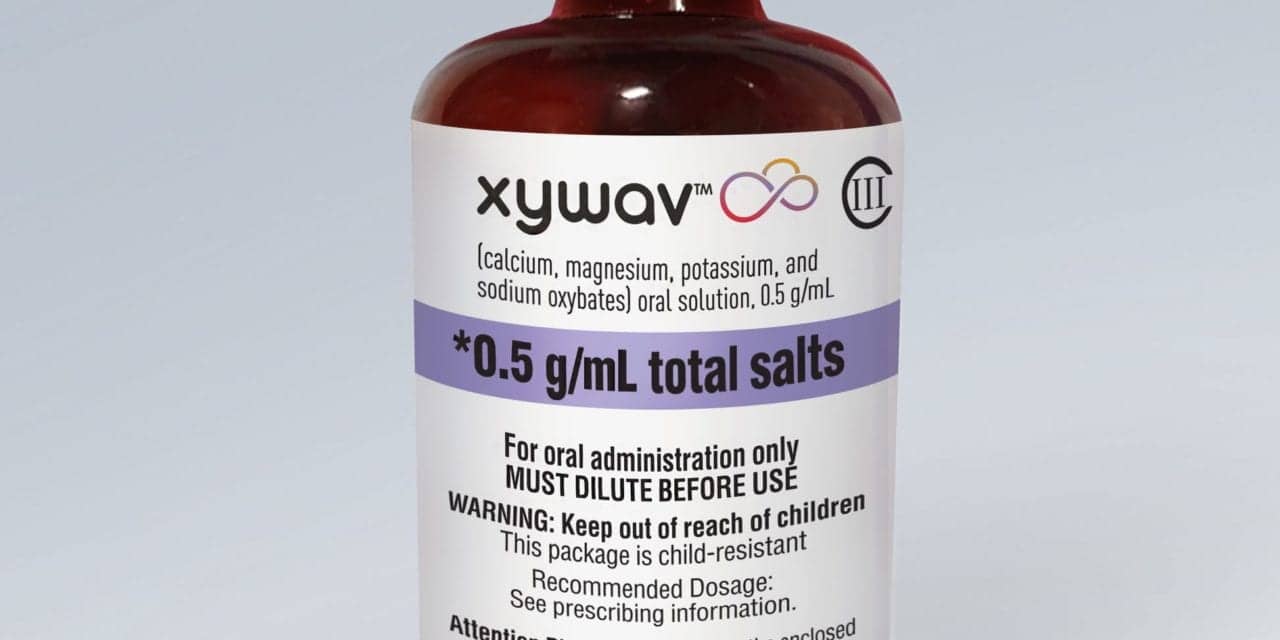Jazz Pharmaceuticals plc announced new data that examine the comorbid risk of cardiovascular disease in patients with narcolepsy and idiopathic hypersomnia as well as the effect of sodium intake on cardiovascular health.
The company will also present results from the real-world TENOR study on individualized dosing regimens for adults with type 1 or type 2 narcolepsy transitioning to low-sodium Xywav (calcium, magnesium, potassium, and sodium oxybates) oral solution from high-sodium Xyrem (sodium oxybate) oral solution. The study will be presented today at the World Sleep 2023 in an oral session on evidence-based approaches for optimizing pharmacologic treatment for narcolepsy.
Xywav is the first and only low-sodium oxybate approved in the US for the treatment of cataplexy or excessive daytime sleepiness in patients 7 years of age and older with narcolepsy and for the treatment of idiopathic hypersomnia in adults. Xywav contains the same active moiety as Xyrem, but the maximum recommended nightly dose contains only 131 mg of sodium, which is 92% less sodium than the 1,640 mg of sodium contained in the maximum recommended nightly dose of Xyrem.
At the maximum recommended dose, the sodium content in Xyrem equates to 109% of the American Heart Association’s daily ideal sodium intake for most adults, while the sodium content in Xywav accounts for less than 10% of this standard. This substantial reduction could allow patients switching from Xyrem to Xywav to achieve a daily sodium intake target of 2,300 mg, and ideally 1,500 mg, as set by the American Heart Association, according to a release from the company.
Two presentations underline the importance of low-sodium treatment options to help manage cardiovascular risk in patients with narcolepsy and idiopathic hypersomnia:
- An exploratory, post-hoc analysis from two phase 3 trials of Xywav in narcolepsy and idiopathic hypersomnia examined changes in blood pressure among patients previously naïve to oxybate therapy. At baseline, the mean systolic blood pressure, measured in millimeters of mercury (mmHg), was 122.1 mmHg and 122.8 mmHg in patients with narcolepsy and idiopathic hypersomnia, respectively. The analysis found that there were no clinically meaningful differences from baseline in systolic blood pressure in those who initiated treatment with low-sodium Xywav during the 10- to 14-week open-label study periods.
- A separate presentation on findings from a systematic review of literature evaluating the relationship between sodium intake and clinical outcomes demonstrated some statistically significant associations between higher sodium intake and certain cardiovascular and cardiometabolic outcomes.
These studies demonstrate that low-sodium therapies, in addition to comprehensive management plans focusing on the holistic health of patients, can help patients with narcolepsy and idiopathic hypersomnia reduce their chronic sodium burden, according to a release from the company. This reduction in sodium burden further contributes to the mitigation of certain health risks in patients with sleep disorders, who have an increased risk of cardiovascular and cardiometabolic morbidity based on their diagnosis.
“Narcolepsy and idiopathic hypersomnia impact day-to-day functioning across settings and, moreover, are linked with a significantly increased occurrence of a broad range of cardiovascular comorbidities,” says Kelvin Tan, MB BCh, MRCPCH, senior vice president and chief medical officer at Jazz Pharmaceuticals, in a release. “These data suggest that clinicians should carefully monitor the cardiovascular health of their patients with sleep disorders, discuss modifiable risk factors such as sodium intake, and consider prescribing therapies that take their cardiovascular risk into account.”
In addition, the prospective, observational TENOR study will be shared as an oral presentation. As defined, individualized dosing applies to twice-nightly oxybates, including Xyrem and Xywav, and encompasses the following to achieve an optimal treatment experience: the ability to titrate with precision down to 0.25 mg, the ability to adjust the timing of the 2nd dose to occur between 2.5-4 hours after the first dose, and the ability to prescribe equal or unequal doses for the first and second doses.
In the analysis, 20% of patients reported benefiting from individualized dosing, specifically taking unequal doses at any point, with 12% of patients reporting they were taking an unequal dosing regimen at 21 weeks.
Overall, the most common reasons cited for taking a higher first dose were to avoid feeling groggy in the morning (44% and 33%, respectively), to help fall asleep (25% and 13%, respectively), and to improve sleep quality (13% and 29%, respectively). These real-world insights may help inform clinical decision-making around individualizing dosing regimens in patients with narcolepsy.
“Real-world data regarding individualized dosing regimens for the treatment of narcolepsy are limited. As an established leader in sleep medicine, we are committed to helping patients find effective approaches to manage this chronic, debilitating sleep disorder,” says Wayne Macfadden, MD, sleep therapeutic area lead and neuroscience global medical affairs at Jazz Pharmaceuticals, in a release. “The real-world insights revealed in the TENOR study may help healthcare providers counsel patients with narcolepsy around dosing regimens to meet their individual needs and goals for improved daytime functioning. An individualized approach to Xywav dosing would not only empower patients to communicate their goals and unique needs, but also enable healthcare providers to adapt more effectively, helping to advance improved patient outcomes.”
The TENOR study was a patient-centric, prospective, observational study of US adults with type 1 or type 2 narcolepsy. In the study, 85 patients (narcolepsy type 1, n=45; narcolepsy type 2, n=40) transitioning to low-sodium Xywav from high-sodium Xyrem completed daily and weekly diaries and questionnaires for 21 weeks post-transition.





